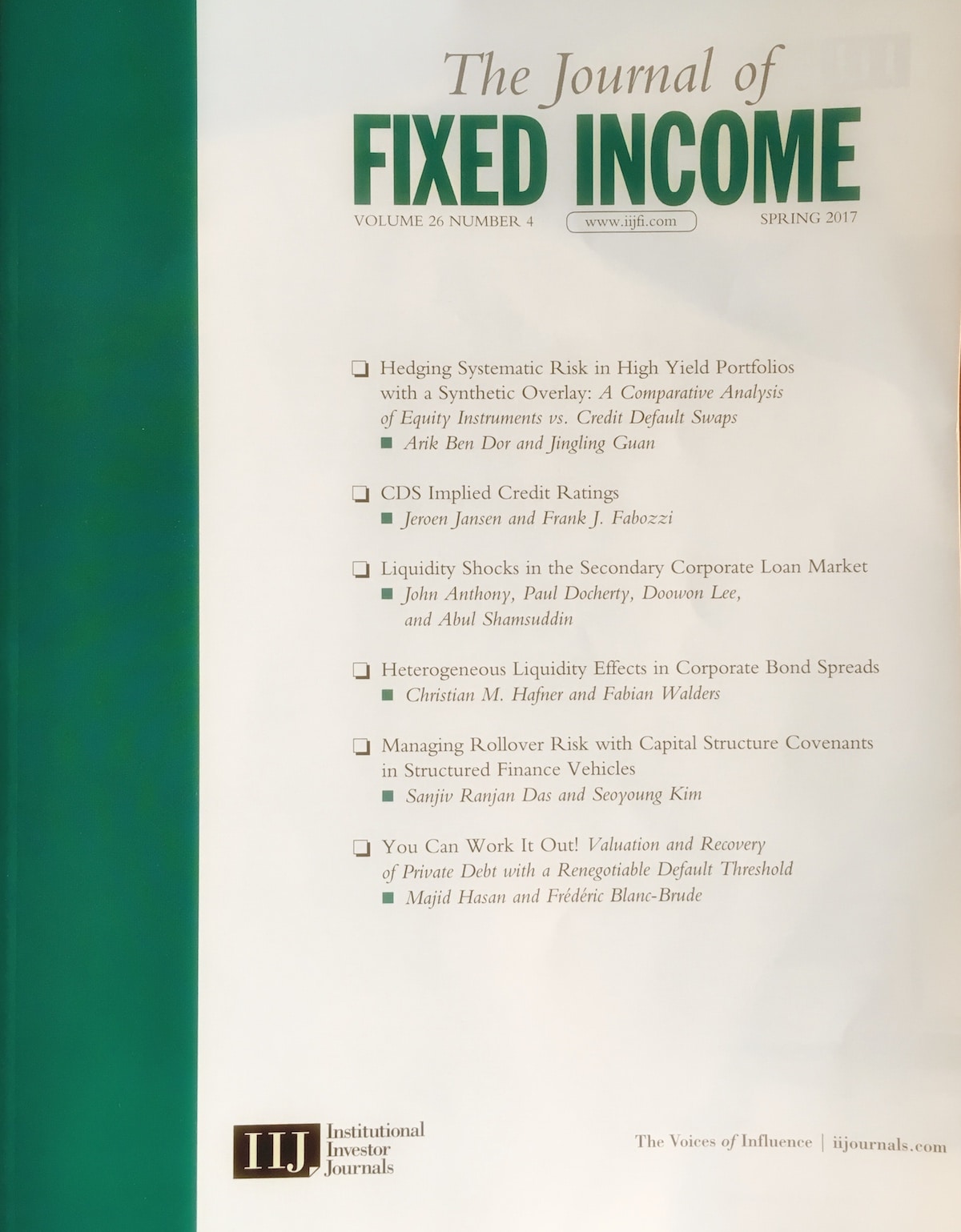
Summary
This article proposes an empirical evaluation of credit risk in private infrastructure project finance (PF) debt. Despite its importance in the practice of banking, PF has received little attention in the finance literature. But a growing interest among asset owners in search of yield and diversification in private debt in general and infrastructure debt in particular suggests that documenting the risk profile of private debt instruments has become an increasingly relevant empirical question.
Existing empirical research on private infrastructure project credit risk relies on the possibility of observing actual events of default among a population in order to measure default frequencies, that is, so- called reduced form models that represent credit risk as an exogenous random variable or hazard rate, which have been produced by credit rating agencies (see, e.g., Moody’s Investors Service [2017]).
These studies are built using data pooled from banks and can include hundreds or thousands of loans originated by project finance lenders over the past two decades or more. As such, they usually claim to be representative of the underlying population of originated loans (Moody’s [2017, p. 2]). While this may be the case (assuming no reporting biases among lenders), the related claim that such datasets can provide an unbiased view of the credit risk of private infrastructure loans is not self-evident.
In making these claims, rating agencies assume that a representative dataset of credit instruments allows the observation of enough credit events to derive unbiased default frequencies.
However, this need not be the case if the population of instruments being sampled offers only limited evidence of credit events and what might cause them. Hence, there exists a fallacy of composition—inferring that the observation of a representative sample of credit instruments necessarily allows the observation of an equally representative set of credit events.
If credit events are sufficiently frequent within a population of loans, this assumption can be reasonable. If, however, credit events are sufficiently rare, or are clustered in time and space, then historical events of default may not provide unbiased estimates of future credit risk to creditors.
This point is well illustrated by the near-zero, 10-year marginal probability of default for project finance loans reported in the most recent Moody’s study (Moody’s Investors Service [2017, p. 22]) In the very large sample available to Moody’s, there is close to zero reported (first) default events in the 10th year after financial close. By this measure, conditional on no default during the first 10 years, reported default risk in
private project finance debt is equivalent to that of a AAA rated bond, yet it typically carries a credit spread in the range of 80–250 bps, and when they are rated, infrastructure project loans tend to remain in the BBB/ BBB–range even after 10 years, directly contradicting rating agencies’ own reported default probabilities.
Insurance statisticians are familiar with these issues. It can be difficult to derive meaningful statistics about the likelihood of events that are seldom observable, let alone in sufficient numbers to control for the multiple variables that might have determined them. The likelihood of an earthquake in a given location or that of the mid-air collision of two commercial airplanes are typical examples. Likewise, modeling a hazard rate for investors in private infrastructure project debt is made more difficult by the difficulty in observing large sam- ples of the phenomenon of interest.
Moreover, infrastructure investment is character- ized by the large size of each investment and a highly illiquid private market, meaning that individual inves- tors are usually exposed to a handful of assets and not the mean asset available at that time. Hence, even if credit events were frequent enough to model default frequencies accurately for a representative investor holding a large sample of available loans, the immense majority of creditors would not be better informed about their own risk exposure.
In this article, we propose a simple but powerful approach to deal with the dearth of information available about credit risk in private infrastructure debt: we extend the structural model of credit risk in private illiquid debt we put forward in Blanc-Brude and Hasan [2016], using Bayesian inference to extract robust credit risk estimates from observable data on cash flow ratio collected at the individual borrower level. We also provide a calibration of the model using a unique dataset of project finance cash flow covering 14 European countries and going back two decades.
Our objective is to calibrate a model of distance to default (Kealhofer [2003]) in infrastructure project finance. Hence, the absence of observable default events does not limit our ability to model and predict default, since we can measure default risk before default events occur and even if they never occur. As a result, our approach also allows introducing control variables that are unavailable to reduced form models relying on observing actual default events.
This approach can be applied to a representative sample of loans, as is the case in existing studies, or to an individual portfolio or even a single loan, thus removing the requirement to hold a representative portfolio to derive meaningful information for an investor in private infrastructure debt.
The rest of this article is organised thus: first, we provide a very brief overview of the credit risk framework that underpins our empirical investigation. Next, we present our data and initial descriptive results, and the third section proposes a model to estimate the dynamics of private borrowers’ credit ratios. The fourth section describes our results, compares them with those from prior studies, and briefly discusses industrial applications.

